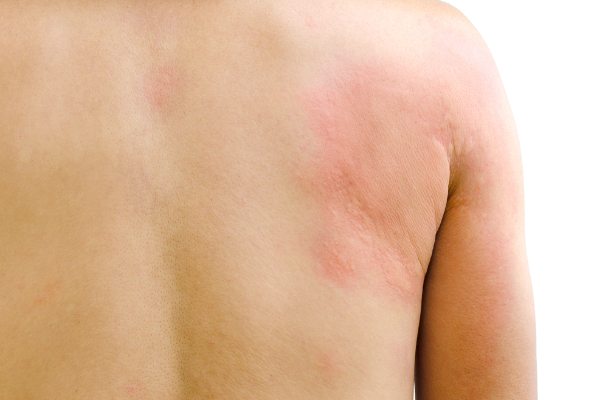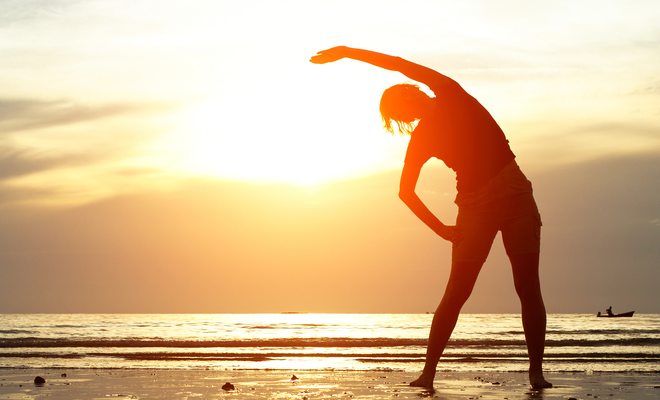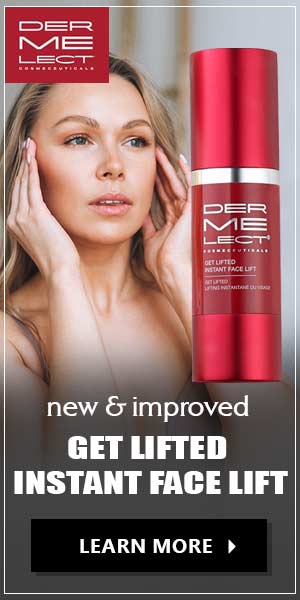We all know that exercise offers clear, unquestionable benefits for your overall health and your skin.
What most people don’t know, and even exercise enthusiasts and skin challenged individuals often fail to appreciate, is the fact that exercise can have downright disadvantages to your skin health as well.
Skin Problems and Exercising
A growing number of skin experts are turning their backs on exercise.
Should you?
Does exercise change your face?
Apparently, yes, and it does affect the manifestation of skin conditions that you may or may not already have.
Perhaps the most obvious skin problems from exercise that you can suffer are the ones that involve bacteria and skin infections.
Based on a study, exercise can compromise your skin’s protective barrier functions.
Coupled with sweaty skin, the perfect environment for infection-causing bacteria is created every time you work out.
The bacterial growth and the further compromises made on the skin’s surface layer cause your skin to become even more prone to infections.
If you already have autoimmune-related skin conditions such as eczema and psoriasis, you can expect the effects on your skin to worsen.
How Can Exercise Leave Your Skin Beat?
There are many ways.
Here is a list of the 9 exercise-induced skin conditions you should be aware of when you’re into workouts for the long haul:
1. Hives

Exercise-Induced Urticaria/Hives – Image/Shutterstock
Also known as urticaria, there are several types of which that can inflame your skin.
How do you know its hives?
You experience one or more of the following symptoms:
- Severe skin flushing.
- Raised bumps.
- Reddened skin.
- Swelling of facial tissues.
When the condition is accompanied by dizziness, intense headache, or, shortness of breath, it should be immediately treated as an emergency condition, and exercising must be completely stopped.
In mild cases, the hives will become relieved on its own.
In some cases, an antihistamine may have to be administered. In the case of life-threatening hives, epinephrine will likely be prescribed.
2. Saggy Breasts
Even dermatologists have argued that exercising leads to saggy skin.
The constant jiggling and dribbling can cause skin fibers to stretch in unnatural ways, eventually loosening the tight hold of fibers to each other, making your skin sag.
Can exercise cause Saggy Breasts too? Experts say, “yes”.
In-clinic treatments can help arrest skin and breast sagging, including laser resurfacing and surgical restructuring.
Despite the availability of such treatments though, the better way to deal with this condition is to prevent it in the first place.
You cannot choose to discontinue your workouts for all of the countless health benefits that you can derive from it but, you can resolve to find the right bra to support your breasts.
Here’s how:
- Choose a bra based on the intensity of the workout that you are performing.
- When you know you will be jumping and running continuously, you should get a high impact bra.
- Mind the functionalities.
- A high-impact bra will give you both encapsulation and compression benefits.
- Consider the back support.
- The best high-impact bras will be structured with a racerback which helps distribute the weight and impact of your workout to different parts of your body with your core as main support.
3. Inflamed Skin
Exercise can also aggravate existing inflammatory skin conditions.
Your face can severely redden and become inflamed right after a workout, most especially when you already have existing conditions such as rosacea and miliaria, which is also aptly termed as “sweat rash”.
4. Anaphylaxis
A potentially life-threatening condition that is often caused by food and insect bites but, may also follow rigorous exercise.
Symptoms include developing hives but also gastrointestinal conditions, including nausea.
Some conditions develop as a result of a deadly combination of food allergy and exercise.
So next time you notice your skin rash after exercise, don’t ignore it.
5. Bacne

Exercise induced pimples on back and shoulders – Image/Shutterstock
Whoever thought that acne can only grow on the face has been gravely misinformed.
What causes pimples on the back and shoulders?
The same acne bacteria that make your face break out, of course.
Sports activities that require certain gears and attires, most especially when combined with poor hygiene will create a breeding ground for these acne-causing bacteria.
6. Athlete’s Foot
One of the more popular examples of exercise-induced conditions will have to be those fungi that love the moisture that forms in-between your toes.
They’re called athlete’s feet for a reason, that’s because the resulting moisture that forms on your toes during a workout is what this fungus loves.
Stick to hygienic practices and you’ll never have to endure this itchy and embarrassing skin condition.
Keep your toes dry. Brush your toes when you shower at the end of the day.
7. Sun Damage

Over exposure to Sun may induce serious skin conditions – Image/Shutterstock
For sports activities that involve prolonged sun exposure, extra sun care and precautions must be taken.
Here are some smart sun tips to help you preserve the health and beauty of your skin:
- Time your sun activities wisely. Choose early morning or late afternoon to be up and about under the sun. Never soak in midday when the sun shines its brightest.
- Make sure you are wearing safe and appropriate sunscreen like Vichy Capital Soleil SPF 50+.
- Prolonged sun exposure deserves long-wearing sunscreen.
- Toxicity, however, is a real issue so make sure you know what goes into your sunscreen formulation.
- Look for antioxidants.
- The best sunscreen formulas will have antioxidants in the ingredients list.
- These amp up your sun protection but also shield your skin cells from free radicals.
- Use other means to protect your skin.
- Wear the right gear, and wear the ones that add another layer of protection between the sun and your skin. Choose clothes with tightly knit fibers like nylon or lycra.
- Darker clothes are thicker.
- Wear your sun hat and your sunglasses.
- Cover as much of your skin as possible.
Related Post – Sunburn And Windburn Skin Condition
8. Cholinergic Urticaria
This condition is brought about by inherent hypersensitivity to heat.
When the temperature of the body rises, such as after performing cardio exercises, eating spicy foods, hot baths or, even heated arguments, symptoms of hives become visible.
The hives are often relieved with a cold compress or shower.
In more chronic cases, an antihistamine may be prescribed as a maintenance treatment.
can be triggered by several heat-raising activities:
jogging or aerobic workouts are obvious, but also hot baths or showers, eating spicy foods, and even emotional stress can bring on hives.
9. Eczema

Eczema and exercise don’t go together – Image/Shutterstock
The condition is marked in the genes but, manifest under stressful situations.
Eczema is a sign of a weak skin barrier and a surface that reacts with perspiration which, in turn, causes darkening of skin folds, such as on the front part of the elbows, back of knees, armpits, and in-between the legs.
When you have eczema, make sure to clean and clear up your skin completely after exercising, and try to stay dry as much as you can.
FAQ’s:
Que: How does exercise affect your skin?
Ans: Getting the heart rate up and improving blood circulation, can help to deliver oxygen and nutrients to the skin which keeps the skin healthy.
Que: Does exercise affect your face?
Ans: Exercise, along with good nutrition and adequate hydration, can help to improve facial fullness and complexion, giving you a healthier, more youthful look.
Que: Why do I get rashes after working out?
Ans: It is a reaction from your body to an increase in your body temperature. It typically results in hives surrounded by large patches of red skin and is induced by sweating during a workout.
Conclusion
There’s no reason why you should stop exercising, not even when that could involve any serious skin condition.
You should, instead, become more aware of ways to better manage your skin.
Have a great workout without the side effects!
Like this post? There’s more. Get tons of beauty tips, tutorials, and news on the thebeautyinsiders Facebook & Twitter page. Like us on Facebook – we’ll see you there!
 By Wendy Gould
By Wendy Gould





